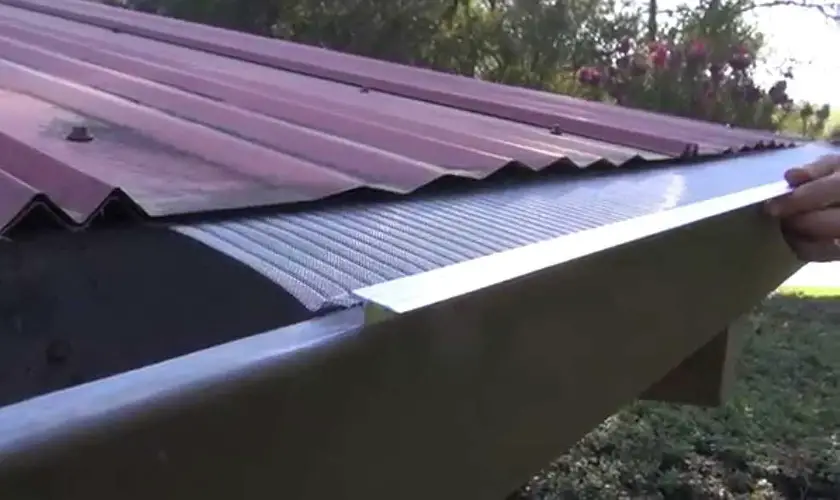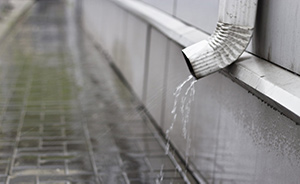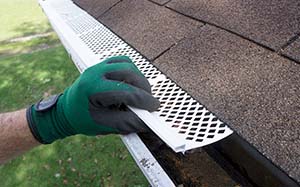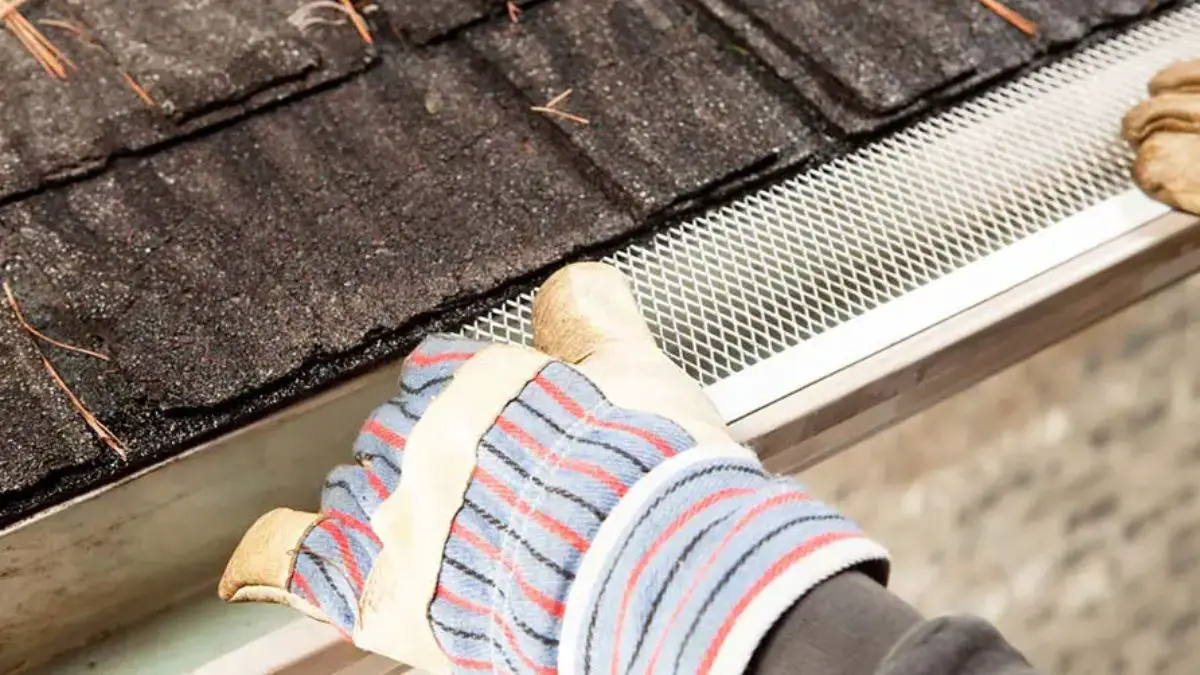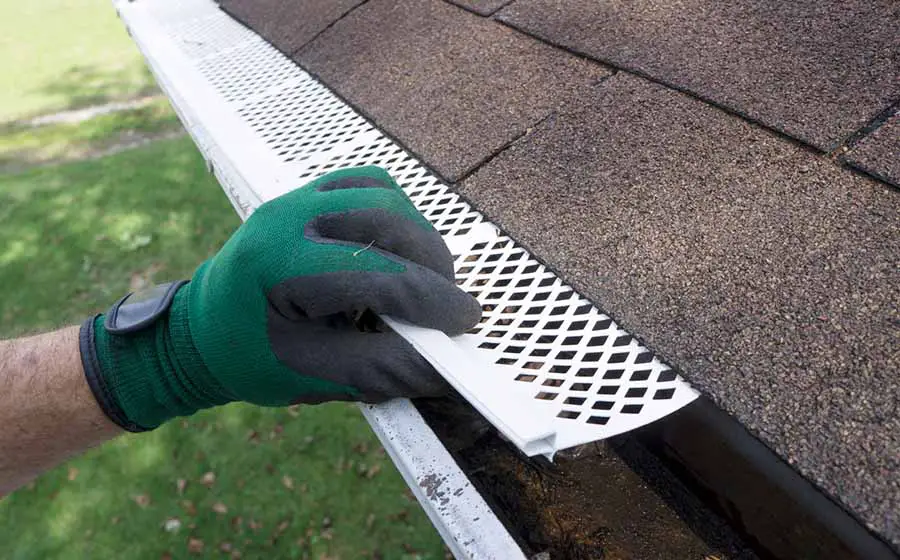
Autumn is picturesque in most climates, with leaves littering the roads and rooftops. It’s common to see people all over neighborhoods raking leaves into bundles. However, it can be a stressful time for homeowners. Leaves from trees overwhelm gutters. And somebody has to clear them out before they cause damage.
You can install most gutter guards on existing gutters quite easily. Brush insert gutter guards are the easiest to install, but you can also easily add micromesh, screen, and reverse curve guards. Installing gutter guards on existing gutters does not require special skills or tools.
You are in the right place if you’ve had enough climbing up your roof to clean debris out of your gutters. We delve into gutter guard types and if they can ease your autumn gutter cleaning.
Recommended Reading: Are Gutter Guards Worth It or a Waste of Money? We Ask the Pros
Installing Different Types of Gutter Guards On Existing Gutters
You can get these types of gutter guards that will work with your existing gutter. There are pros and cons to gutter guards, regardless of type.
| Gutter Guard Type | Can You Install on Existing Gutters? | Ease of Installation on Existing Gutters |
|---|---|---|
| Micromesh | Yes | Extremely simple and quick |
| Brush Inserts | Yes | Very easy and quick |
| Screen | Yes | Simple but more challenging |
| Reverse Curve | Yes | More complex, but still relatively simple |
Micromesh Gutter Guards
Mesh system gutter guards are some of the most popular among homeowners. They have a simple design: two strips of material with a fine mesh. The mesh keeps debris out.
Micromesh gutter guards work well with existing gutters. An installer would only have to slip one end under the shingle while the other end attaches to the outer edge of the gutter.
Alternatively, you can curl the mesh into an L on one end and screw it into the fascia under the roof. The other end would slip into the gutter for a tight fit.
There are different types of mesh gutter guards. It’s up to you to pick one that keeps your gutters as clean as you like, depending on the fineness of the mesh.
The Downsides of Micromesh Gutter Guards
The two installation styles of micromesh gutter guards have flaws.
The under-shingle micromesh has an angle that makes water glide over the gutter and down to the foundational edge of the house. Over time, it will erode that area or even cause some flooding.
The second installation style, where the guard is flat, tends to leave the leaves bulked on top of the mesh. Finer particles clog the tiny holes, forcing you to use the power washer to clean the mesh.
However, they are a great affordable option for existing gutters in an area without too much leaf coverage. Also, the ease of installation makes it easy to remove and install during routine cleanups.
Brush Inserts
Brush inserts are one of the least complicated gutter guards to keep your gutters debris-free. They have two components: a stainless steel wire spine and polypropylene brush filaments. These filaments can withstand any weather condition.
You can install these inserts yourself. You only need to get the right fit and lay the inserts inside your existing gutters. The filaments keep debris out, allowing only water to pass through. In principle, it sounds easy. However, there are drawbacks.
The Downsides of Brush Insert Gutter Guards
Though they’re easy to manage, they will still accumulate finer particles. Also, they don’t keep out tiny twigs, seeds, or pines. You’ll still have to remove the inserts and clean the gutters.
Screen Gutter Guards
Screen gutter guards are like a stronger, more perforated version of mesh gutter guards. They come in aluminum material and a variety of styles.
- K-Style Drop-In screen guards
- K-Style Lock On-screen guards
- K-Style Hinged screen guards
- Half Round Hinged
Despite the various screen guard types, the size of the perforation makes them prone to more danger.
The Downsides of Screen Gutter Guards
Screen guards gather bigger debris over a shorter time compared to micromesh guards. The debris buildup can make the gutters heavy, destroying your roof and making the entire gutter an accident waiting to happen.
Screen gutters installed under the shingles can void the roof’s warranty by distorting the roof. Roof distortion can be problematic for new homeowners who want to minimize risk if they’ve just bought or moved into a new home.
Reverse Curve Gutter Guards
Reverse curve gutter guards get their name from how they work. Water runs down the roof towards the gutter. It slides off the top, flows down the bend at the edge, and spills backward into the gutter. The bigger leaves get washed down to the ground while surface tension directs water into the gutter and down the downspout.
They don’t filter the debris to keep them on the gutter guard. They direct as much water with as little debris as possible.
Most reverse curve gutter guards have an ⅜ inch opening for the water. They can take up to 22 inches of rainfall at a time – much more than you’ll typically need in the US. Like the other gutter guards, reverse curve gutter guards have shortcomings, too.
The Downsides of Reverse Curve Gutter Guards
Reverse curve gutter guards are notorious for ice dams. You lift the shingle at an angle when you install them. Water on aluminum freezes quickly, making the water underneath the shingle solidify into icicles.
Also, reverse curve gutter guards are not 100% effective in keeping all the rainwater in the gutter and keeping out the debris from the gutter. Water and debris will skirt the surface of the guard down to the side of your house, defeating the purpose of the gutter guard.
Reverse curve gutters are growth havens for insects and plants. The gutter guards provide enough shade, dirt, and a wet spot. Plants will likely take root there if seeds germinate. Insects such as bees and wasps will make their colonies in that space.
Finally, they don’t leave the most sightly marks on the gutter. The oily runoff from the roof usually clings to the side, creating a dirty lining. It takes a while to notice, but it’s not the most appealing thing to see to a keen homeowner.
Can You Install LeafGuard on Existing Gutters?
LeafGuard is a one-piece complete gutter system. It operates using a principle called liquid adhesion. Liquid adhesion is when rainwater runs down your roof, flows around the LeafGuard’s edge, and goes down the gutter instead of overflowing over the gutter.
The leaves from the roof go over the LeafGuard so that you can rack them up later. The upside of the LeafGuard is that it does not clog as frequently as other gutter guards.
You cannot add LeafGuard to an existing gutter. It already comes as a complete package. You must install it on a gutterless roof or remove the existing gutter.
Removing an existing gutter to install LeafGuard sounds risky for any homeowner. However, it has some perks.
They Drastically Cut Cleaning Frequency
You must still frequently clean out conventional gutter guards placed in existing gutters. Like those gutter guards, LeafGuard’s one-piece design doesn’t collect and accumulate debris inside. We know gutter cleaning isn’t exactly glamorous work. Whether you do it yourself or have to outsource the service, a chance to do it less is always welcome.
You’ll only need to do routine maintenance twice a year. Less cleaning frequency also reduces the likelihood of any gutter-related accidents.
More Water Handling Capacity
Under different circumstances, 32 inches of rainfall per hour would overwhelm the average gutter guard. However, LeafGuard’s curved design can handle up to 32 inches of hourly rainfall. For context, Hurricane Harvey dumped over 25 inches of rain in just 24 hours.
The LeafGuard one-piece system will send all that water from torrential downpours down the downspout with minimal risk of damaging the sides of your house or buildup in the gutter.
It Comes With a No-Clog Guarantee
A lot of gutter guards are mesh-based or screen-based. The design creates an inherent flaw that makes the gutter guard susceptible to buildup and clogging over time. Depending on the leaf shedding around your home, clogging might take a short time.
However, LeafGuard’s design makes it almost harder to accumulate debris. Also, the downspouts are 30% larger than the industry standard to remove any additional roof water. That slight hack makes the makers give customers a no-clog guarantee as one of the upsides to choosing LeafGuard.
It Eliminates Excess Water Pooling
Most gutter guard systems, especially foam gutter guards, are prone to pooling. Debris usually collects overtime on the guards. It creates a barrier that gets more backed up if you don’t clean it out. The water down the downspout decreases whenever it rains, creating pools in the gutters.
The pooled water can become a harbor for insect hatchlings or areas for unwanted growth. It puts a strain on your gutter and your roof. You might have to cop out extra cash for gutter repairs if you continue to neglect it.
No-Rust Material
If your home has an exterior addition dedicated to handling rainwater, it must be the least susceptible to water damage. You can have the LeafGuard one-piece system in any color you want. It’s made from aluminum, 20% thicker than the industry standard.
The paint is scratch-proof. Rain sometimes comes with harsh winds that make every twig a potential projectile capable of scratching the surface. The gaps would expose the metal underneath and cause it to rust and eventually collapse.
Custom-Fit for Your Home’s Design
Getting a one-piece system means you always have to clarify your design specifications to get the right fit. The installer takes your home’s measurements and creates a unique system. They also consider the location’s conditions.
LeafGuard sounds like a superior choice compared to other gutter guards. However, that’s not to discredit other gutter guards. A gutter guard might be more convenient than getting a new system if you buy a home with a pre-installed gutter system.
How Much Does It Cost to Get the Best Gutter Guards Installed?
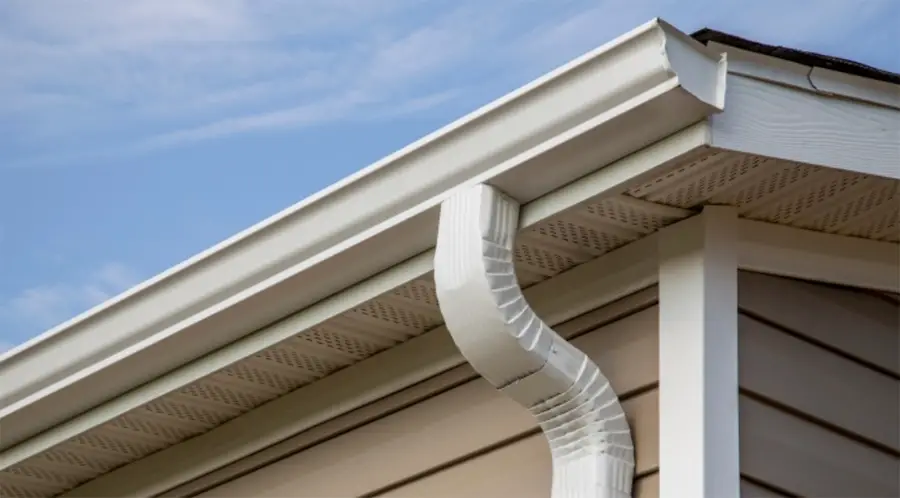
You can rank the best gutter guards as the ones that last the longest or keep the most debris out.
On average, homeowners can expect to spend between $950 and $1900 for gutter guard installation. It is typically between $5 and $13, rounded to the nearest dollar. Installation totals depend on four factors.
- Choice of gutter guard
- The professional installer or installation company
- The gutter guard’s brand
- The area you expect to cover
| Gutter Guard Type | Material Cost (Per Linear Foot) | Installation Cost (Per Linear Foot) |
|---|---|---|
| Plastic PVC Screen | $0.35 to $1.13 | $2.50 to $3.75 or DIY |
| Steel Screen | $1.50 to $3.17 | $2.50 to $3.75 |
| Metal Mesh Guard | $1.16 to $2.75 | $2.50 to $3.75 |
| Micro-Mesh | $2 to $3.50 | $2.50 to $3.75 |
| Aluminum Perforated Cover | $0.67 to $1.33 | $2.50 to $3.75 |
| Reverse Curve Gutter Guard | $3.58 to $6.69 | $3 to $12.00 |
| Foam Guard | $2.17 to $4.25 | DIY |
| Brush Guard | $3.12 to $4.50 | DIY |
Additional Costs
Other factors might increase your installation costs. They might cover the added convenience of comfort or cover the risk to the installer.
- Heat tapes cost about $0.73 per linear foot. They prevent ice dams from forming on your gutters and the air spaces between shingles.
- Gutter cleaning before installation or during routine maintenance costs between $120 and $203.33.
- Gutter removal costs about $0.83 and $1.18 per linear foot if you want to install a one-piece gutter system. The one-piece gutter system will cost about $4 to $30.33 per linear foot.
- Tree trimming before gutter guard installation or during cleanup costs between $300 and $700 a tree.
Your installation company and prior research are the keys to getting suitable deals. Consult your installation experts and service providers in your field before settling. Most service providers will give you free quotes if you have precise measurements. Also, professional installers might ask for a visitation fee to assess the site before work.
Why Are Gutter Guards Bad?
While gutter guards might have a case for themselves, they are also not above criticism. Sure, they keep debris out. Some people will even point out that the initial setup costs pay for themselves in the long run. On the other hand, they have their pitfalls.
- The best gutter guards don’t come cheap. The perfect gutter guard system has great material, installation, and debris prevention. This combination doesn’t come cheap.
- You can’t escape gutter cleaning. You can reduce the frequency of cleaning your gutters, but cleaning out your gutters once or twice every year is mandatory.
- Cleanup can be more expensive if you have gutter guards. A professional cleaner might add a levy to the usual price to clean a gutter with guards. However, you can use your negotiation skills to retain a sensible price.
- Gutter guard installation can void your roof warranty depending on the guard type and installation mode.
- If the gutter guard goes below the shingles, your home becomes more vulnerable to ice dams and incoming cold during the chilly months.
- Wrong gutter guard installation can leave your roof with holes from awful nailing.
You can mostly avoid these scenarios if you work with highly skilled professionals.
Pro tip: You can make better choices if you work with a professional company or through testimonials.
Can You Put Gutter Guards On Half Round Gutters?
Yes, you can put gutter guards on half-round gutters. Although modern homeowners view half-round gutters as old school, they still have a place in modern architecture. Their smooth interior makes them more durable and provides less space for water pooling.
Although gutter guards are limited, you can still install half-round gutter guards. The half-round gutter guards attach to the shingle’s bottom, then curve and clip to the front bottom of the half-round gutter.
Ensure the gutter guard doesn’t rest flat on the half-round gutter. When it’s flat, it forms a shelf and makes the gutter guard clog, beating its purpose.
Alternatively, you can try malleable options such as brush inserts and foam gutter guards to keep debris out of your half-round gutters.
Final Thoughts
Gutter guards are a valid and viable solution to keeping debris out of gutters. They reduce the gutter cleanup frequency and lower the risk of injury by reducing how frequently you have to go up near the roof. They’re not a foolproof plan, but they work.
Consulting a professional installer or gutter service provider will save you the hassle of repairs and exorbitant fees.


